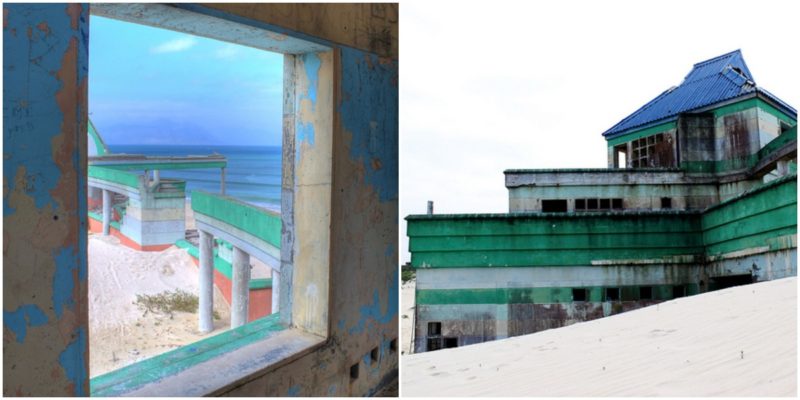Southwest of Cape Town on the coast of False Bay lies the small town of Macassar. It’s close to Somerset West and Strand and a bit to the north of the famous Earth of Good Hope. The town has a population of around 33,000 people. Historically the people predominately have made a living out of fishing and boat building.
It is a calm and safe place unlike it’s neighbor Mitchells Plain which suffers from crime and drug trafficking, as do many of the South African smaller towns and cities around Cape Town.
The cool vibe of the town and the prime location is why it was chosen to be a home of a water park. It was build on the grounds of Macassar Dunes Nature Reserve Area which is a 2,760 acre national reserve, the largest and highest dune ecosystem in the Cape Peninsula.
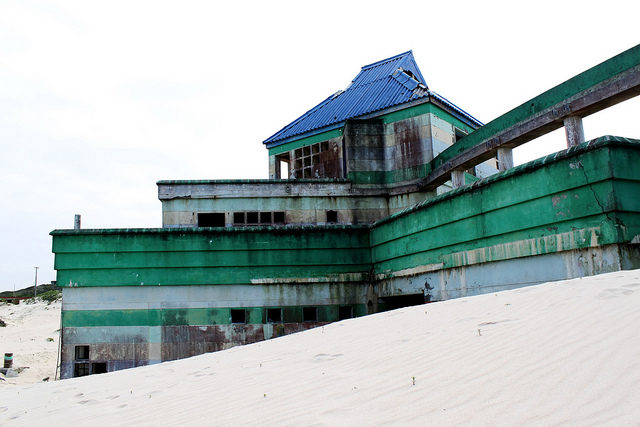
It is protected and very important because, apart from being largest, it is a vital coastal dune system. A prime hot spot of biodiversity unlike any other in the area and home to the most diversity of dune flora and fauna.
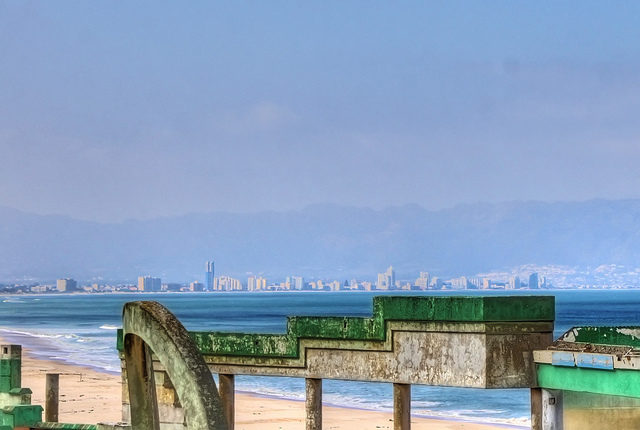
The aqua park was built in 1991 and named Macassar Beach Pavilion. It must have been the sweetest most eerie place in the whole of South Africa. Bright blue and green everywhere, wooden beach houses and plastic toboggans with playgrounds filled with sand all around, and of course the bright blue sea of False Bay. In no time at all it became a very popular beach resort in the area. It attracted thousands of people from the Cape Flats.
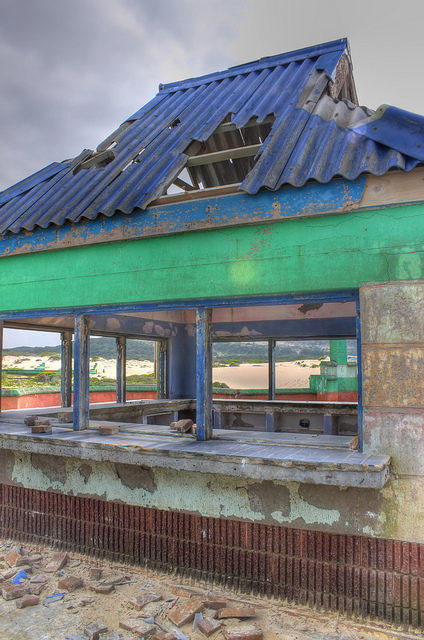
Financial troubles hit the Macassar Beach Pavilion around the turn of the millennium. Maintenance and financial support for the employees came short. It was a hard work that required a lot of equipment and many hands keeping the place clean from sand. The dunes are known for their unpredictable winds and shifts. Neglect from both the employers and the employees began to show. This resulted with drop in popularity among the visitors, with it the income went down and after a while the water park went out of business and was closed for good.
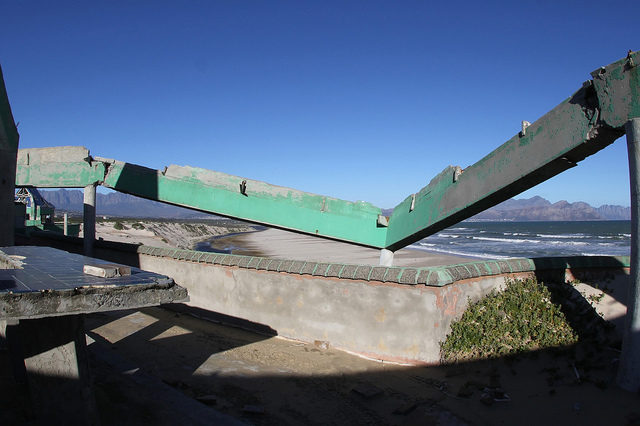
Today it still has a certain charm with its faded blues and greens. All covered in sand as if The Mummy woke up and swept it’s windy sandy wings swiftly above it. Toboggans are filled with sand, so are locker rooms and showers, beach houses are too are seemingly being swallowed up under the shifting white sand. Looking like this the Macassar Beach Pavilion started attracting many curious travelers and adrenaline junkies as well as tourists.
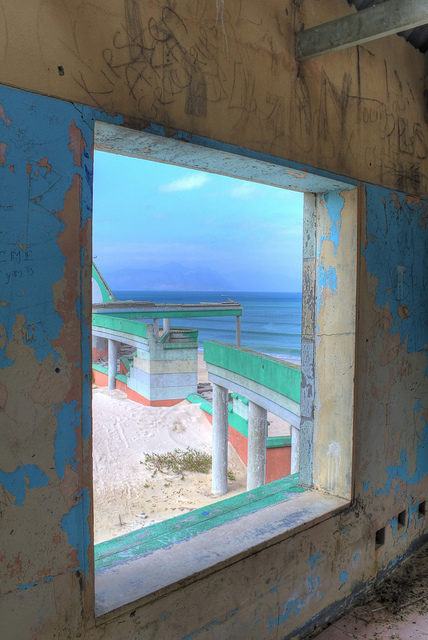
They go there to be amazed by what men and nature can do together, or more precisely what nature can do with what men created, after it is abandoned and unused for a while. The sea and sand contrast provided there make a great challenge for photographers, both professional and amateur, to show their craft or just snap a few good ones on the go.
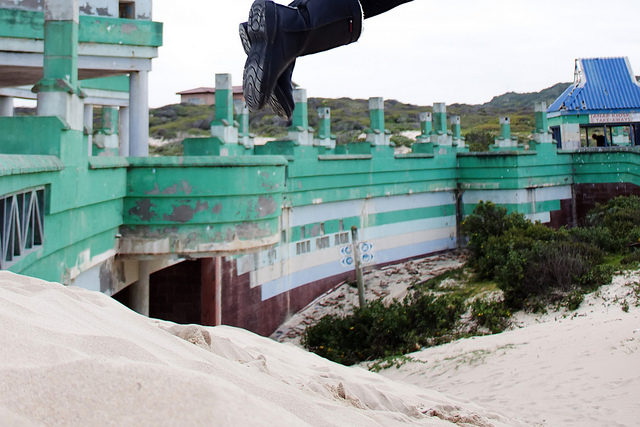
The area surrounding the former aqua park and most of the dunes of the Western Cape are also popular and attractive for recreational 4×4 vehicle driving. Some companies even test their vehicles on the sand of the Cape Dunes. This and cattle grazing are the two most damaging activities to the flora and fauna of the dune system. Both directly conflict with the Macassar Dunes Nature Reserve goal of preserving this unique ecosystem.
